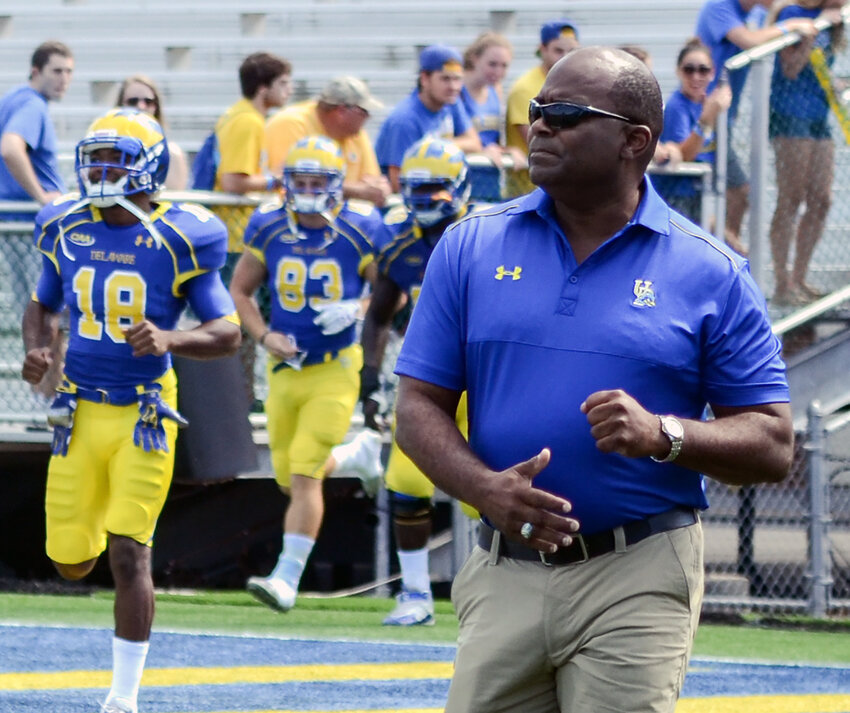DIAA looking to clarify high school transfer rules
DOVER — There’s no question that transfer student-athletes have had an impact on Delaware high school sports.
Just look at last week’s DIAA boys’ basketball state …

You must be a member to read this story.
Join our family of readers for as little as $5 per month and support local, unbiased journalism.
Already a member? Log in to continue. Otherwise, follow the link below to join.
Please log in to continue |
DIAA looking to clarify high school transfer rules
DOVER — There’s no question that transfer student-athletes have had an impact on Delaware high school sports.
Just look at last week’s DIAA boys’ basketball state semifinal game between Dover and Middletown High.
Between the two squads, there were nine players who were on the rosters of different Delaware schools the year before.
While all of those particular players might have had legitimate reasons for ending up where they did, there’s also a belief that students transferring seemingly for athletic reasons has become a problem in the state.
The Delaware Interscholastic Athletic Association isn’t trying to stop student-athletes from switching schools.
But the organization is trying to at least clarify the rules involved with transferring while trying to make sure the system isn’t being abused for athletic purposes.
“The feedback that I heard is that people were circumventing at least the spirit of the rules,” said DIAA executive director Dave Baylor. “It became a process that people just didn’t have any confidence in.
“And once you don’t have any confidence in a process, then people attack that process. People felt that other people misused the process.”
A rules and regulation committee looking into high school athletics in the state has recently made recommendations for a more streamlined process.
The DIAA board of directors and the state Board of Education still have to approve the measures this spring and summer. There will also be an opportunity for public comment
The hope is that the new regulations could be in place for next school year.
Under the new guidelines, student-athletes would still have one “free” transfer before the start of their junior year. After that, however, they would have to sit out a certain portion of their season — perhaps 30 days — before they could compete at a new school.
The DIAA would also basically get rid of its time-consuming waiver system.
Until now, student-athletes could ask the organization for a waiver that would allow them to transfer and compete right away.
There would still be exceptions to the transfer rule. But the DIAA board would no longer have to consider each waiver request.
Baylor said, since he became the DIAA’s executive director last July, he’s received about 24 waiver requests.
“So much of their time has been taken up with waiver hearings and so forth,” Smyrna High athletic director Bill Schultz said about the DIAA board. “They’re not able to look at some programs and look at some things to really benefit our student-athletes. And that’s ultimately what they’re there to do.
“When you’re in an eight-hour meeting, it’s not productive.”
“Now everybody will know what the rule is,” said Baylor. “It will apply to everyone, private and public school.
“There was a feeling that, under the current system, most of the private schools benefited. ... I think there were some public schools that also benefited.”
Baylor said the hope is that the new rules would restore some confidence that the state’s regulations are being adhered to.
The committee looked at the regulations in neighboring state New Jersey before formulating ones for Delaware.
“I think people will see this process as more equitable,” said Baylor.
“It’s my belief this regulation draft will make the playing field more level. It will take away that perception that the private schools have a benefit over the public schools.”
Often with transfers, the families and sometimes school officials, aren’t clear on the transfer regulations.
“We’re trying to make it understandable for the schools and the student-athletes who are transferring,” said Schultz, who is on the rules and regulation committee.”And we’re trying to make sure it’s for legitimate, academic reasons.
“Overall, the percentage of athletes that we have that are transferring is very small. But there are ones that, in some cases, are in the headlines.”
At the end of the day, Schultz said he thinks the committee members will continue to look at ways to make the system better.
“Whether they need change or need some updating or some clarification, I think that’s the most important part,” he said. “We’re trying to make it a little more cut and dry.”
“We’re trying,” said Baylor. “We’re not perfect. We make mistakes but we’ll try our best to make it better.”
Sports editor Andy Walter can be reached at awalter@iniusa.org. Follow on X at @DSNsports.


 By
By 





